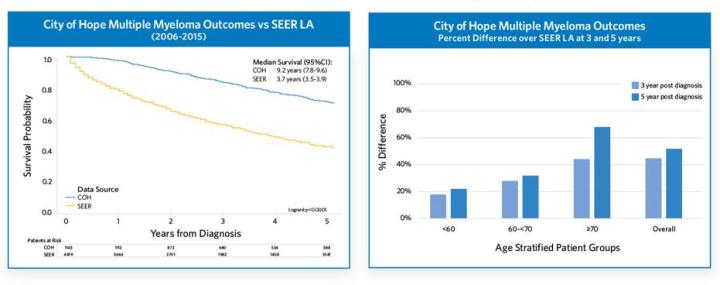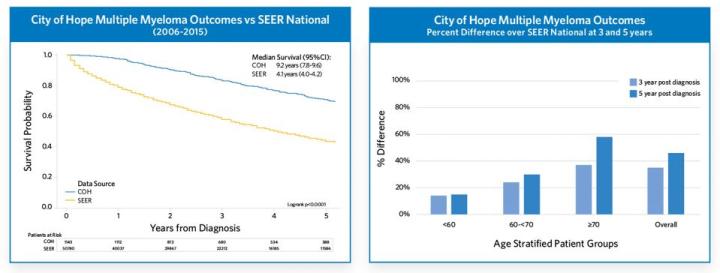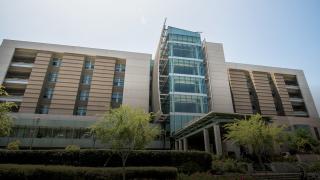City of Hope’s dedication to innovative research and groundbreaking advancements in the field of cancer over our 100-year history has resulted in measurable outcomes for our patients. With one of the largest research and treatment centers for hematological malignancies in the country, we’re able to provide world-class care while continuously making stem cell transplant and leading-edge research advancements in order to bring lifesaving therapies to patients.
Although it’s considered to be a relatively rare cancer, multiple myeloma (MM) remains the second most commonly diagnosed blood cancer. The mission of our Judy Bernard Briskin Center for Multiple Myeloma Research, which sees one of the highest volumes of MM patients in Southern California, has been to aggressively pursue innovative research and develop state-of-the-art treatments in order to find a cure for MM. Our superior MM survival outcomes, both regional and national, speak to the level of excellence City of Hope brings to patients who receive cancer treatment with us.
Multiple myeloma survival at City of Hope is more than double the Los Angeles area survival at all ages
Across all ages, the median survival for patients with MM was 9.2 years for City of Hope and 3.7 years for SEER Los Angeles. When looking at age stratified patient groups (<60, 60-<70 and ≥70 years of age), the survival probabilities of City of Hope compared to those of SEER LA at three and five years postdiagnosis showed:
- A percent difference of ≥18% across all ages
- In patients ≥70 years of age, there was a 68% difference between City of Hope and SEER LA survival probabilities five years after diagnosis
This illustrates the magnitude of difference in the level of care City of Hope is providing to MM patients in comparison to average outcomes for the Los Angeles region.


Five years after diagnosis City of Hope survival is 46% greater than SEER National Average across all ages


Using the same datasets as described above, City of Hope determined that median survival for patients with MM was 9.2 years for City of Hope and 4.1 years for SEER National, indicating that the survival outcomes for City of Hope patients was over 120% greater than the national survival. For the age stratified patient groups (<60, 60-<70 and ≥70 years of age), the percent difference between City of Hope and SEER National data three and five years postdiagnosis was ≥14% across all age groups. The survival outcomes at City of Hope give patients with MM the best chance of extended survival possible.
More about SEER and CNeXT Comparison
Our analyses were conducted using data from City of Hope’s Cancer Registry (CNeXT) and the National Cancer Institute’s Surveillance, Epidemiology and End Results (SEER) Program November 2018 Disease-specific data files. You can find more information about the SEER Program and our impressive multiple myeloma outcomes in our full Multiple Myeloma Outcomes Report .
To begin the referral process for a patient with multiple myeloma call us at (877) 460-4673 or visit CityofHope.org/referral.
